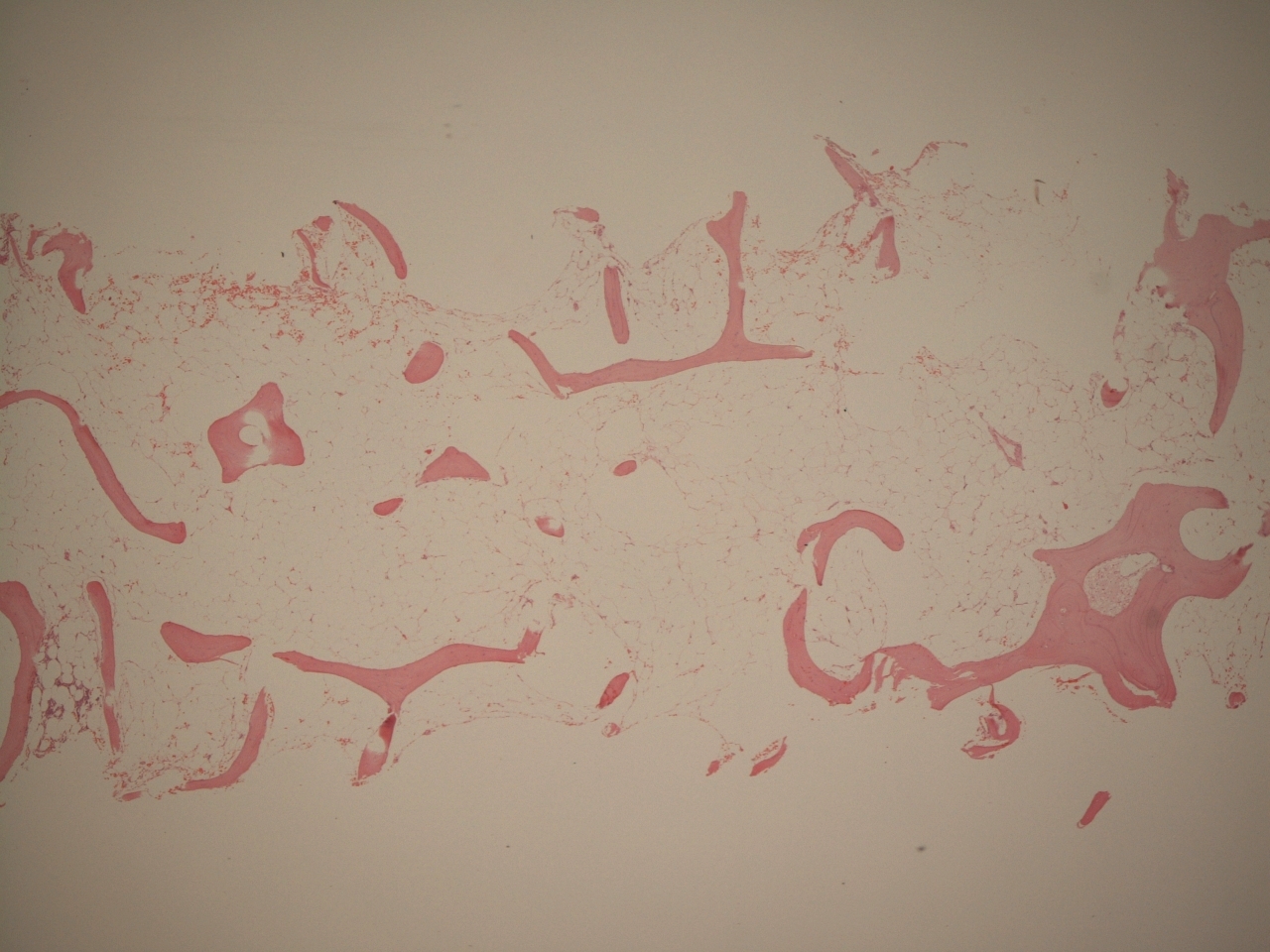Contents
Introduction
Aplastic anaemia is disease in which there is marked atrophy of the haematopoietic elements of the bone marrow which results in pancytopenia. The disease has various causes but they centre around the basic mechanisms of destruction of the stem cells of the bone marrow or interference with their ability to divide.
A wide range of ages can be affected.
The causes include the following.
- Idiopathic
- Congenital (for example Fanconi's anaemia)
- Radiation
- Chemotherapy
- Assorted viral infections
- Anti-epileptic drugs (phenytoin)
- Sulphonylureas
- Carbimazole
- Antipsychotics
- Antibiotics
- Chloramphenicol
- Sulphonamides
- Nitrofurantoin
- Toxins
Pathology
Some of the causes of aplastic anaemia are toxic to the haematopoietic stem cells whereas others induce an autoimmune response to the stem cells. In both cases there is profound atrophy of the haematopoietic bone marrow and expansion of the mature adipose tissue content. The bone marrow becomes hypocellular.
As the atrophy continues the cellularity of the bone marrow drops to the point where the bone marrow cannot sustain normal peripheral blood cell counts and pancytopenia develops. The three haematopoietic lineages often do not fail in the same time period and the patient may develop a monocytopenia then a bicytopenia before a pancytopenia.

|
|
A bone marrow trephine that demonstrates aplastic anaemia
|
Clinical Features
Patients develop
anaemia, easy bleeding and a tendency to infection. In severe cases of aplastic anaemia the patient is vulnerable to opportunistic infections and can succumb very quickly to infection.
Investigations
The full blood count will disclose the pancytopenia; the reticulocyte count will also be low.
The blood film is useful for determining if blast cells are present (acute leukaemia can also cause pancytopenia).
Patients who have pancytopenia will generally require a bone marrow trephine.
It is often prudent to check the vitamin B12 and folate levels.
Treatment
The treatment aims to address the cause, restore the normal bone marrow and support the patient while this is being accomplished.
The pancytopenia requires blood transfusion, prevention of infection and frequently platelet transfusions.
Anti-thymocyte globulin (antibodies to T cells) is effective in 50-60% of cases and is combined with steroids. Androgens or bone marrow growth factors may also be tried. Nevertheless, some patients need bone marrow transplantation. Others may recover spontaneously.
Untreated aplastic anaemia is frequently fatal.